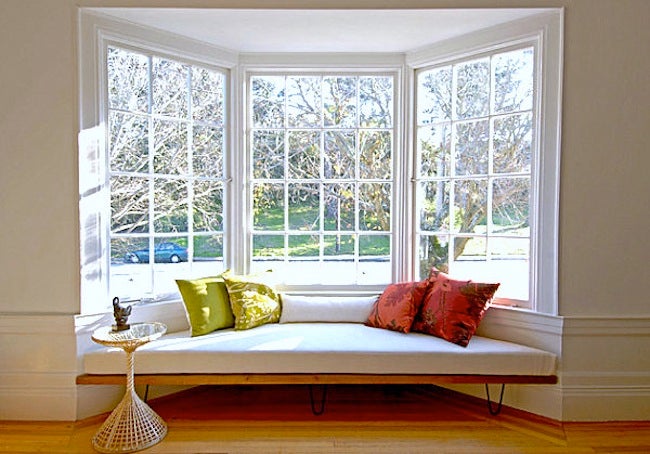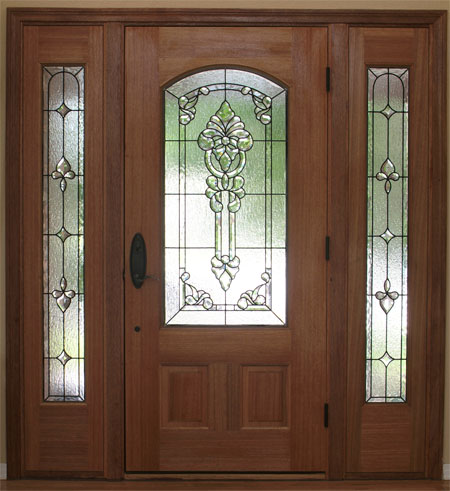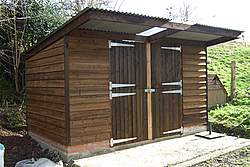 Bay Window
Bay Window: projection from the side of a house into which one or more windows are set.
 Casement Window
Casement Window: Window that are hinged at the side.
%20lores.jpg) Clapboard
Clapboard: A long, thin, flat piece of wood with edges horizontally overlapping in series, used to cover the outer walls of buildings.
 Dormer
Dormer: A structural element of a building that protrudes form the plane of a sloping roof surface.
 Eaves
Eaves: The part of a roof that meets or overhangs the walls of a building.
 Fanlight
Fanlight: A window, semicircular or semi-elliptical in shape, with glazing bars or tracery sets radiating out like an open fan.
 Palladian Window
Palladian Window: Large window that is split into three parts.
 Pediment
Pediment: The triangular upper part of the front of a building in classical style, typically surmounting a portico of columns.
 Portico
Portico: A porch leading to the entrance of a building, or extending as a colonnade, with a roof structure over a walkway, supported by columns or enclosed by walls.
 Rafter
Rafter: One of a series of sloped structural members that extend from the ridge or hip to the wall plate, downslope perimeter or eave, and that are designed to support the roof deck and its associated loads. A pair of rafters is a couple.
 Sidelights
Sidelights: A narrow window or pane of glass set alongside a door or larger window.
 Turret
Turret: A small tower that projects vertically from the wall of a building such as a medieval castle.







 Bay Window: projection from the side of a house into which one or more windows are set.
Bay Window: projection from the side of a house into which one or more windows are set. Casement Window: Window that are hinged at the side.
Casement Window: Window that are hinged at the side.%20lores.jpg) Clapboard: A long, thin, flat piece of wood with edges horizontally overlapping in series, used to cover the outer walls of buildings.
Clapboard: A long, thin, flat piece of wood with edges horizontally overlapping in series, used to cover the outer walls of buildings. Dormer: A structural element of a building that protrudes form the plane of a sloping roof surface.
Dormer: A structural element of a building that protrudes form the plane of a sloping roof surface. Eaves: The part of a roof that meets or overhangs the walls of a building.
Eaves: The part of a roof that meets or overhangs the walls of a building. Fanlight: A window, semicircular or semi-elliptical in shape, with glazing bars or tracery sets radiating out like an open fan.
Fanlight: A window, semicircular or semi-elliptical in shape, with glazing bars or tracery sets radiating out like an open fan. Palladian Window: Large window that is split into three parts.
Palladian Window: Large window that is split into three parts. Portico: A porch leading to the entrance of a building, or extending as a colonnade, with a roof structure over a walkway, supported by columns or enclosed by walls.
Portico: A porch leading to the entrance of a building, or extending as a colonnade, with a roof structure over a walkway, supported by columns or enclosed by walls. Rafter: One of a series of sloped structural members that extend from the ridge or hip to the wall plate, downslope perimeter or eave, and that are designed to support the roof deck and its associated loads. A pair of rafters is a couple.
Rafter: One of a series of sloped structural members that extend from the ridge or hip to the wall plate, downslope perimeter or eave, and that are designed to support the roof deck and its associated loads. A pair of rafters is a couple. Sidelights: A narrow window or pane of glass set alongside a door or larger window.
Sidelights: A narrow window or pane of glass set alongside a door or larger window. Gable Roof: a roof with two sloping sides, forming a triangle at one or both ends.
Gable Roof: a roof with two sloping sides, forming a triangle at one or both ends. Hipped Roof: All four sides of this roof slope inward to meet at a peak, or ridge.
Hipped Roof: All four sides of this roof slope inward to meet at a peak, or ridge. Saltbox Roof: A variation of the gable roof, originally created when a low lean-to addition was built onto the back wall of a house.
Saltbox Roof: A variation of the gable roof, originally created when a low lean-to addition was built onto the back wall of a house. Shed Roof: A simple, one-slope roof; also called a lean-to roof.
Shed Roof: A simple, one-slope roof; also called a lean-to roof.